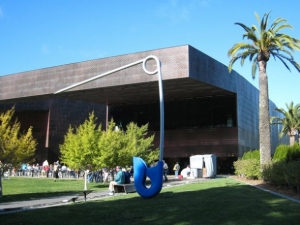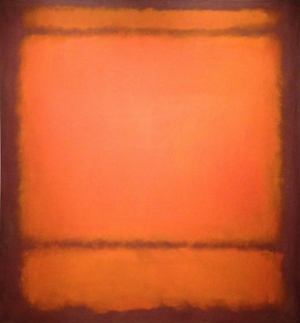|
Displaying items by tag: Neoclassical
The Philadelphia Museum of Art is reassembling, restoring and scrutinizing parlor furniture that scandalized some Philadelphians when it was new.
The suite of gilded chairs, tables and couches was produced in 1808 for the Philadelphia drawing rooms of the merchant William Waln and his wife, Mary Wilcocks Waln, who made fortunes partly in the Chinese opium trade. On the neo-Classical pieces, designed by the British émigré architect Benjamin Henry Latrobe, a fellow British immigrant, the artist George Bridport, painted petals and griffins.
The Dallas Museum of Art today announced the acquisition, for its European painting collection, of a remarkable life-size triple portrait by the neoclassical painter Jean Antoine Théodore Giroust (1753–1817). The painting, "The Harp Lesson (La leçon de harpe)," created a sensation when it debuted at the Paris Salon exhibition of 1791. The work is a significant addition to the Museum’s holding of 18th-century portraits and is an important example historically of the art of portraiture. The painting goes on view today, included in the Museum’s free general admission, in the DMA’s European Painting and Sculpture galleries on Level 2.
“This monumental painting is a transformative addition to the Museum’s galleries of European art at the end of the 18th century.
Being asked to make a site-specific work can be a poisoned chalice for an artist, particularly when the site is the suite of three neo-classical Duveen galleries that form the architectural spine of Tate Britain. These vaulting, pompous spaces –named after the wily Edwardian art dealer Joseph Duveen, who paid for their columns, pediments, and polished floors –have each year been given over to a British artist to work with. Last year, Phyllida Barlow dominated the space by filling it with a forest of wooden scaffolds, suspended blocks and mountains of wooden pallets.
In a letter he wrote in 1825, the American painter John Vanderlyn said that paintings by the itinerant portraitist Ammi Phillips were “... cheap and slight, for the mass of folks can’t judge of the merits of a well-finished picture.” Vanderlyn had gone to France for academic training. His masterpiece, “Ariadne Asleep on the Island of Naxos” (1809-14), a suavely erotic, neo-Classical vision of a nude woman dozing in a pastoral landscape, is one of the gems of the collection of the Pennsylvania Academy of the Fine Arts. But a discerning viewer today might well prefer Phillips. His “Girl in Red Dress With Cat and Dog” (1830-35) is one of the loveliest paintings by any American artist.
A wonderful painting attributed to Phillips is included in “A Shared Legacy: Folk Art in America,” an inspiring exhibition at the American Folk Art Museum.
Bellini. Botticelli. Titian. "Of Heaven and Earth: 500 Years of Italian Painting from Glasgow Museums" celebrates the richness of Italy’s artistic legacy. It features religious paintings of the late Middle Ages and Renaissance, along with secular Neoclassical and genre paintings of the nineteenth century—with the principal artistic centers, such as Bologna, Florence, Milan, Naples, Rome, and Venice, represented. Milwaukee is the only Midwest stop on the tour of this rare exhibition.
Opening with some of the earliest and most refined examples of Italian painting, including Sandro Botticelli’s stunning "Annunciation," the exhibition unfolds chronologically.
As befits the man who, when he was director, undertook the £6m refurbishment and restoration of Sir John Soane’s Museum in London, Tim Knox, now the director of the Fitzwilliam Museum, Cambridge, has had the museum’s 1848 portico and railings restored.
The museum was designed by George Basevi (1794-1845), a pupil of Sir John Soane, and one of the leading neo-classical architectures of his generation.
Internationally acclaimed gallery Hauser & Wirth is teaming up with respected curator Paul Schimmel to launch a multidisciplinary arts center in downtown Los Angeles. Operating under the name Hauser Wirth + Schimmel, the joint venture will transform a 100,000-square-foot flour mill complex into a contemporary art mecca.
The seven-building compound, which includes a Neoclassical bank building, a five-story mill structure, and a sprawling interior courtyard, will open in January 2015. Hauser Wirth + Schimmel will debut with a two-month pop-up group show before closing for extensive renovations.

After 15 months without a director, the Fine Arts Museums of San Francisco will appoint Colin B. Bailey, a deputy director at the Frick Collection in New York, the head of the consortium. Bailey, 57, is a renowned specialist in 18th and 19th century French art and has been at the Frick since 2000.
The Fine Arts Museums of San Francisco, which includes the modern-leaning M.H. de Young Memorial Museum and the neoclassical California Palace of the Legion of Honor, was left leader-less after the death of its previous director, John Buchanan, in 2011. The city of San Francisco and a private board of trustees oversee the museums, which collectively are the largest public arts institution in San Francisco and one of the largest art museums in the state of California.
The announcement, which was made by the museum board on Wednesday, March 27, 2013, comes after a considerable period of tumult among the museums; the past year has included tense labor negotiations, firings of senior staff members, and scathing criticism of the board’s president, Diane Wilsey. Wilsey, an art collector, philanthropist, and prominent San Francisco socialite, has been accused of using the museums’ resources for her own benefit and of nepotism.
The museums’ recent troubles have not deterred Bailey’s excitement to join the Fine Arts Museums. His abundance of museum experience includes stints at the National Gallery of Canada, the J. Paul Getty Museum in Los Angeles, the Philadelphia Museum of Art, and the Kimbell Art Museum in Fort Worth, Texas.

When the Crystal Bridges Museum of American Art opened its doors for the first time in Bentonville, Arkansas on November 11, 2011, the institution presented about 450 works of art, nearly half of its entire holdings. A little over a year later, the Crystal Bridges’ collection has ballooned and now includes over 2,000 artworks thanks to an active acquisition program led by Executive Director Don Bacigalupi, museum curators, and a solid leadership board. Within the past year, the Crystal Bridges Museum has acquired five sculptures, eight paintings, one mixed media work, 468 prints, and 504 works on paper, including photographs, drawings, and watercolors.
Museum officials were particularly excited to acquire a large painting by Abstract Expressionist artist, Mark Rothko, titled No. 210/No.2011 (Orange) (1960) and held an official unveiling back in October. The piece, which has only been exhibited twice in public, is currently part of the museum’s temporary exhibition, See the Light: The Luminist Tradition in American Art. After the show closes in late January, the Rothko work will be moved to the museum’s Twentieth-Century Art Gallery.
Other major acquisition include a portrait by American folk artist Ammi Phillips (1788-1865), titled Woman in Black Ruffled Dress (circa 1835); a neoclassical white marble sculpture completed in 1867 by William Wetmore Story (1819-1895); a contemporary mixed-media work from the early 1980s by Californian artist Miriam Schapiro (b. 1923); and a large painting titled Tobacco Sorters (1942-44) by the twentieth-century American artist, Thomas Hart Benton (1889-1975), which was commissioned by the American Tobacco Company.
A private collector who specialized in early twentieth-century works facilitated the major growth in the museum’s print department. The recent acquisitions vary in style from Benton’s Regionalism to Charles Sheeler’s (1883-1965) Precisionism and include drypoints, etchings, engravings, lithographs, screenprints, woodcuts, and wood engravings. A selection of recently acquired prints will be part of the temporary exhibition Art Under Pressure: Early Twentieth Century American Prints, which will be on view from December 21 through April 22, 2013.
Neoclassicism is the name given to the various classicizing styles that developed in Europe in the later eighteenth and early nineteenth centuries and which profoundly influenced the fine arts, decorative arts, and architecture. Artists and craftsmen found inspiration in the order, clarity, and reason of the art of ancient Greece and Rome and sought to re-create the spirit and forms of the classical world. From each of the different disciplines came something at once new and classically inspired.
|
|
|
|
|